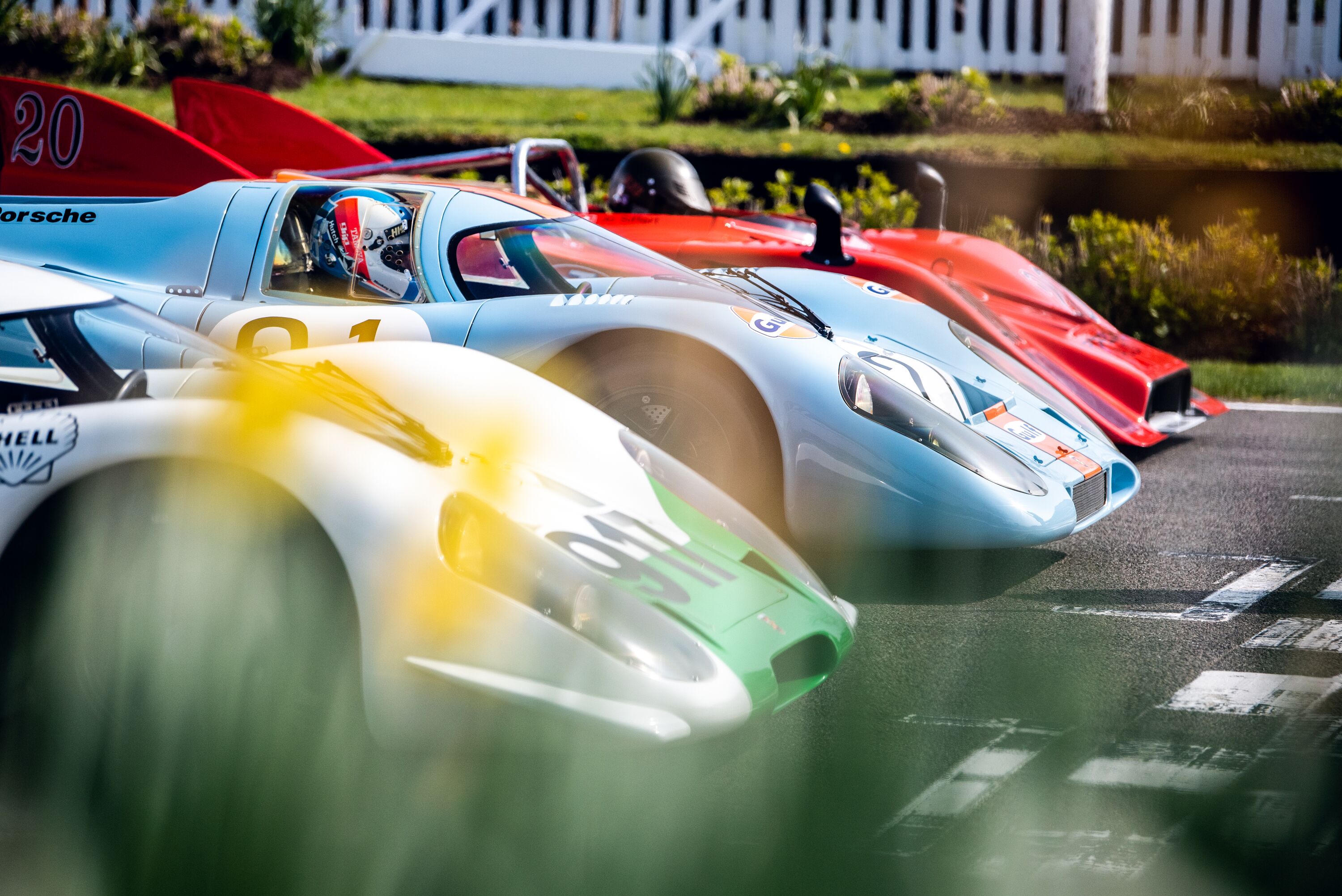The seven worst F1 exits
Ah, the pinnacle of motorsport, it takes a lifetime of hard work and dedication to reach that highest of peaks, but it’s an awful lot easier to find yourself cast aside, regardless of how good you are. The history of Formula 1 is studded with glory and success, but hidden just beneath the trophies and champagne is a graveyard of talent that just didn’t cut the mustard. There have been plenty of unceremonious exits for F1 drivers, but we’ve picked out some of our favourites – if that’s no too harsh a way of putting it.

Yuji Ide (2006)
As F1 exits go, this one was about as calamitous as they’ve come in recent times. His F1 debut was facilitated by the arrival of the new Super Aguri team in 2006 which wanted to field an all-Japanese driver line-up. The team was born from the ashes of the Arrows outfit that had fallen off the grid for the final time in 2002, and was even using an updated version of the Arrows A23 chassis, which at this point was four years old, so it was not particularly competitive. It’s two drivers, Takuma Sato and Yuji Ide, were not expected to be competing for much other than avoiding finishing last. Finishing last was about to become the least of Ide’s worries though.
At 31 years of age, Ide was already one of Formula 1’s oldest ever debutants. He’d spent the years prior driving in Formula Nippon, taking second place in the standings in 2005, but he had no Formula 1 experience to speak of, aside from 200km of testing. So it was bound to be a challenge. Having been soundly outperformed by Sato in Bahrain and Malaysia, Ide was already under pressure by round three in Australia, where he blocked Rubens Barichello in qualifying and had several spins. His F1 career culminated in him causing a Turn One collision at the next race in Imola which resulted in Christian Albers rolling into the gravel. Ide was reprimanded by the FIA and dropped by Super Aguri. A week later, Ide’s Super Licence was revoked, and he would never again be seen on a Formula 1 grid.
Luca Badoer (2009)
For Luca Badoer, racing for Ferrari had become a long-lost dream by 2009. His Formula 1 career had ended ten years prior, holding the record for most grand prix starts without scoring a point. Since leaving Minardi in 1999 Badoer had been Ferrari’s permanent test driver throughout the 2000s, but when Felipe Massa suffered an injury that would see him sidelined for the rest of the season, and Michael Schumacher was unable to step in due to his own injury, Badoer was surprisingly called up to race for the team.
The dream was very quickly curtailed by a substantial dose of reality however, as the magnitude of the challenge Badoer faced became clear. In his first practice session, he was 2.5 seconds off the pace of his team mate Kimi Raikkonen. He was also caught speeding four times during Friday practice. He qualified last, 1.5 seconds behind the next slowest driver and fared little better in the race. He managed to close the gap slightly at the following Belgian Grand Prix, but the sight of a Ferrari traipsing round at the back of the field was simply not going to cut it, and he was swiftly replaced by Giancarlo Fisichella for the following race. While Fisi also struggled to get to grips with the Ferrari, he was at least able to keep up with the rest.
Giedo van der Garde (2015)
It’s often understandable when a driver is cast aside by a team, especially when said driver is simply not quick enough. There are times, though, when that decision is made before a driver has even turned a wheel for them. This is exactly what happened to Giedo van der Garde in 2014. He had signed on initially as a reserve and test driver for the team after his first full season of racing with Caterham the year before, with an agreement to become a Sauber race driver in 2015.
However, noises within Sauber towards the end of 2014 seemed to suggest that perhaps van der Garde’s place in F1 was not certain. Indeed, by the end of the season then Team Principal Monisha Kaltenborn had confirmed Marcus Ericsson and Felipe Nasr as Sauber’s two drivers for 2015. This was swiftly followed by a mess of legal disputes between van der Garde and Kaltenborn in various courts. After a winter of back-and-forth exchanges, which even saw Sauber miss a practice session at the season opening Australian Grand Prix as it risked having its assets seized for disobeying court orders. Van der Garde even turned up at the circuit wearing a Sauber race suit – clearly intending to force his way into the car if he had to. He eventually relinquished his claim to the seat, but it was an ugly episode for F1, and signalled the end of the promising Dutchman’s F1 dream.
Nelson Piquet Jr. (2009)
Well, this is a tricky one, isn’t it? The driver directly involved in one of the most controversial moments in motorsport history, let alone F1. The interesting thing is that it was only once Nelson Piquet Jr.’s F1 career came to an end that we learned exactly what had gone on during the 2008 Singapore Grand Prix. Following a difficult debut year in 2008 alongside Fernando Alonso at Renault it looked as though Piquet Jr. was already on his way out of the sport, but he was kept on for a second season in 2009. Things never really improved for the Brazilian, though, and he was replaced by Romain Grosjean after the Hungarian Grand Prix.
It didn’t take long until barbs were thrown, with Piquet Jr referring to Renault team boss Flavio Briatore as his “executioner”. And that was only the beginning. Within a month, allegations were swirling that Piquet Jr. had deliberately crashed his car at the 2008 Singapore Grand Prix in order to force a safety car and open a gateway to victory for his team mate Alonso. It turned out that Piquet Jr. himself, in return for immunity in the investigation, had made a statement to the FIA that Briatore and Pat Symonds had ordered him to crash. It was, and remains inconceivable, that a team and its driver would even consider putting themselves, other drivers and marshals at risk by staging an accident on a race track. Piquet Jr. has since defended his own complicity, but regardless of whether he can be implicated in what was one of the worst episodes in the history of F1, there is a shadow that will remain forever over his time in F1.
Juan Pablo Montoya (2006)
After such a promising start to life in F1, it really did look and feel as though Juan Pablo Montoya had grown a deep hatred for the pinnacle of motorsport by the end of his five-and-a-half-year stint. After a relatively successful start to life at Williams, after four years it became clear that Montoya was not going to be able to achieve his ambition of winning the world championship at the Grove team. So, he made the decision to move to McLaren for the 2005 season, the team that had so far been closest to braking Ferrari’s dominant grip on the sport.
It became apparent quite quickly though that the abrasive style of Montoya clashed with McLaren boss Ron Dennis, and it took only two races before the seams of the relationship started to fray. Montoya injured himself playing tennis, which meant he had to sit out both the Bahrain and San Marino Grands Prix, to which Adrian Newey, working for McLaren at the time, said the driver had “disgraced himself”. Several complaints about the car followed by a series of incidents and growing frustration over the next 18 months culminated in Montoya announcing in July 2006 that he was heading to NASCAR in 2007. He was immediately relieved of his duties with McLaren, and left the sport for good.
Bertrand Gachot (1991)
So F1 drivers have been fired for all kinds of reasons: poor performances, bad behaviour, controversies and more, but how many drivers have been forced to leave the sport because they’ve been sent to prison? Perhaps only one, and his name was Bertrand Gachot. He was by no means a household name, having failed to qualify for every single race in 1990 and only finishing two races the year before. But it was still big news.
The year was 1991, and he had just won the Le Mans 24 Hours in the Mazda 787B when he was sentenced to 18 months in prison. He had been running late for a meeting with sponsors when he became embroiled in a road rage incident, during which he was convicted of causing actual bodily harm. To make matters worse, the 1991 season was turning out to be Gachot’s best by a mile, and his replacement was a certain Michael Schumacher, who shows exactly what could be done with his Jordan 191 when he qualified an excellent seventh at his first attempt, 1.5 seconds faster than team mate Andrea de Cesaris. In all, it wasn’t a great way to go for Gachot, but he did make an astonishing return the sport just a few months later, failing to qualify for the Australian Grand Prix.
Alain Prost (1991)
Not even multiple world champions are above unceremonious F1 exits, as then-three-time champ Alain Prost discovered when he was dumped out of his seat at Ferrari before the end of the 1991 season. As it was, he was on course for his worst world championship finish (fifth) since 1981, and his first winless campaign since his debut in 1980. He was clearly deeply dissatisfied with the performance of his 643, and made his thoughts known after the Japanese Grand Prix.
It is something of an unwritten (or perhaps it is written) rule within Ferrari that under no circumstances do you criticise the team or its car – it’s a Ferrari after all – and as a result the bosses at the team reacted in a typically Italian way, by sacking Prost on the spot. It was a true fall from grace for the Frenchman, who had forged his reputation as one of, if not the best, racing driver in the world. And here he was, cast out like he was nothing. Ouch. He would of course return to win his fourth world championship with Williams in 1993, but he remains one of the most high-profile drivers to ever have his P45 handed to him.
List
F1
Formula 1
Yuji Ide
Luca Badoer
Giedo van der Garde
Nelson Piquet Jr
Juan Pablo Montoya
Bertrand Gachot
Alain Prost



















